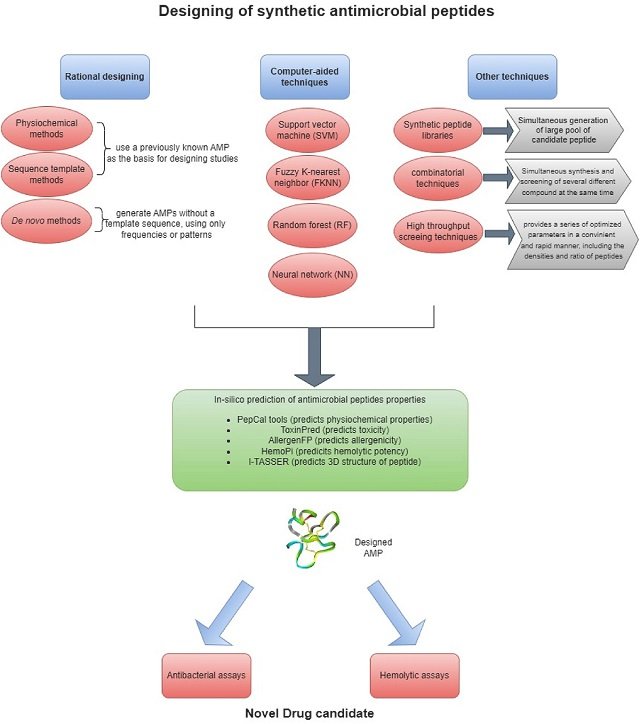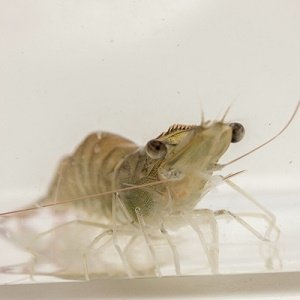
Aquaculture is one of the world’s fastest-growing food production sectors, poised to meet the protein demand of a rising global population. However, the intensification of farming practices has introduced a major challenge: the proliferation of diseases that cause annual losses exceeding $6 billion. The traditional response, the use of antibiotics, has created an even more severe problem: antimicrobial resistance (AMR), which threatens not only the economic viability of the sector but also environmental and human health.
A recent study published in Microbial Pathogenesis by scientists from the ICAR-Central Institute of Coldwater Fisheries Research and the Sher-e-Kashmir University of Agricultural Sciences and Technology of Kashmir delves into one of the most promising solutions to this dilemma: the development of synthetic antimicrobial peptides (AMPs), molecules engineered to combat pathogens effectively and sustainably.
Key takeaways
- 1 Key takeaways
- 2 The growing problem of antibiotic resistance
- 3 Antimicrobial Peptides (AMPs): The body’s natural defense
- 4 The limitations of natural AMPs: Why a synthetic version is needed
- 5 Designing the future: The promise of Synthetic Antimicrobial Peptides
- 6 Key advantages of synthetic analogs
- 7 Conclusion: A step towards safer and more sustainable aquaculture
- 8 Entradas relacionadas:
- The indiscriminate use of antibiotics in aquaculture has led to the emergence of resistant bacterial strains, threatening the industry’s sustainability and public health.
- Natural antimicrobial peptides (AMPs) are a promising alternative, but their limitations—such as high cost, low stability, and toxicity—hinder their large-scale application.
- The design of synthetic antimicrobial peptides allows for the creation of optimized molecules with greater efficacy, improved stability, lower toxicity, and reduced production costs.
- Techniques like rational design, computational methods, and high-throughput screening are crucial for developing new synthetic AMPs effective against specific aquaculture pathogens.
- Synthetic AMPs represent a powerful and sustainable strategy for disease management in aquaculture, reducing dependence on conventional antibiotics.
The growing problem of antibiotic resistance
The extensive use of antibiotics in aquaculture, often administered in feed or directly into the water, has created the perfect breeding ground for the development of resistant bacteria. Researchers report that 70% to 80% of antibiotics given to fish are excreted into the aquatic environment, where they persist and exert selective pressure that favors the survival of resistant strains.
These aquatic ecosystems, rich in diverse microbial populations, become “hotspots” for horizontal gene transfer. Through mechanisms like conjugation and transformation, bacteria exchange resistance genes, rapidly spreading this capability and complicating the treatment of future infections. This scenario urgently demands safe and effective alternatives that do not perpetuate this cycle.
Antimicrobial Peptides (AMPs): The body’s natural defense
In the search for alternatives, antimicrobial peptides (AMPs) have gained significant interest. AMPs are short molecules that form an essential part of the innate immune system in virtually all living organisms, from insects to fish and humans. They act as the first line of defense against a wide range of pathogens.
Their primary mechanism of action is based on their physicochemical properties. AMPs typically have a net positive charge, whereas microbial membranes have a net negative charge. This difference in charge creates an electrostatic attraction that allows the peptides to bind to the bacterial membrane, destabilize it, and form pores, ultimately causing the pathogenic cell’s death.
The limitations of natural AMPs: Why a synthetic version is needed
Despite their great potential, AMPs derived directly from nature present significant drawbacks for large-scale application in aquaculture:
- Instability and low efficacy: In their natural form, they are susceptible to degradation by proteases present in the host organism or the environment, which reduces their lifespan and effectiveness.
- Toxicity: Some natural peptides can be toxic to host cells. For example, piscidin-1 from fish has been reported to cause hemolysis (rupture) of red blood cells.
- High production cost: The chemical synthesis of long and complex peptides, like many natural AMPs, is a costly process due to the reagents and purification steps required, with prices ranging from $100 to $600 per gram.
- Environmental sensitivity: The efficacy of certain AMPs can be reduced in high-salinity conditions, such as seawater, which interferes with the crucial electrostatic interactions necessary for their function.
Designing the future: The promise of Synthetic Antimicrobial Peptides
To overcome these barriers, science has turned to designing synthetic analogs. The primary goal is twofold: to identify the portion of the natural peptide that contains the key antimicrobial action while simultaneously removing the parts that cause toxicity or are vulnerable to degradation.
Stay Always Informed
Join our communities to instantly receive the most important news, reports, and analysis from the aquaculture industry.
How are synthetic AMPs designed?
The creation of these new peptides is not random; it relies on advanced strategies that combine biochemical knowledge with computational power:
- Rational design: This approach uses knowledge of physicochemical parameters (charge, hydrophobicity, structure, size) to modify existing sequences or create new ones from scratch (de novo) with enhanced properties. For instance, amino acids can be rearranged to eliminate protease cleavage sites, thereby increasing stability.
- Computational methods: Before investing resources in synthesis, bioinformatics tools and machine learning algorithms are used to predict the efficacy and safety of thousands of candidates. This allows for the selection of only the most promising molecules for laboratory testing.
- Combinatorial chemistry and High-Throughput Screening (HTS): These techniques enable the simultaneous generation and evaluation of vast peptide “libraries,” dramatically accelerating the discovery of new molecules with potent antimicrobial activity.
Key advantages of synthetic analogs
This custom-designed approach yields peptides with superior characteristics, such as greater stability, reduced toxicity, and, crucially, a lower production cost, especially when creating shorter (truncated) versions that retain or even improve upon the activity of their natural counterparts.
Demonstrated efficacy in aquaculture
Research has already validated the potential of synthetic AMPs in models relevant to aquaculture. For example, a synthetic hepcidin-mimetic peptide, named HepI, was shown to reduce cumulative mortality by up to 49% in sea bass infected with Vibrio anguillarum. In another study, the peptide CAP18 decreased mortality in rainbow trout infected by Yersinia ruckeri by 37% following administration by injection.
Furthermore, AMPs have been observed to have a synergistic effect when combined with conventional antibiotics. By increasing the permeability of the bacterial membrane, the peptides facilitate the antibiotic’s entry into the cell, thereby enhancing its effect and potentially helping to combat already resistant strains.
Conclusion: A step towards safer and more sustainable aquaculture
Antibiotic resistance is one of the greatest obstacles to the sustainability of modern aquaculture. Synthetic antimicrobial peptides are not just another alternative; they represent an intelligent, targeted design platform for creating the next generation of therapeutic agents.
By combining rational design with advanced computational tools, it is possible to develop more potent, safer, and cost-effective molecules. Continued research in this field, along with the optimization of production and delivery systems, will pave the way for synthetic AMPs to become a standard tool in fish health management, ensuring a healthier and more sustainable future for global aquaculture.
Contact
Raja Aadil Hussain Bhat
ICAR-Central Institute of Coldwater Fisheries Research
Anusandhan Bhawan, Bhimtal, Nainital, Uttarakhand, India
Sher-e-Kashmir University of Agricultural Sciences and Technology of Kashmir
Shalimar, Srinagar, Jammu and Kashmir, India
Email: bhataadil08@skuastkashmir.ac.in
Reference
Lohumi, Y., Bhat, R. A. H., & Pande, A. (2025). Synthetic antimicrobial peptides: Combatting antimicrobial resistance for sustainable aquaculture. Microbial Pathogenesis, 209, 108029. https://doi.org/10.1016/j.micpath.2025.108029
Editor at the digital magazine AquaHoy. He holds a degree in Aquaculture Biology from the National University of Santa (UNS) and a Master’s degree in Science and Innovation Management from the Polytechnic University of Valencia, with postgraduate diplomas in Business Innovation and Innovation Management. He possesses extensive experience in the aquaculture and fisheries sector, having led the Fisheries Innovation Unit of the National Program for Innovation in Fisheries and Aquaculture (PNIPA). He has served as a senior consultant in technology watch, an innovation project formulator and advisor, and a lecturer at UNS. He is a member of the Peruvian College of Biologists and was recognized by the World Aquaculture Society (WAS) in 2016 for his contribution to aquaculture.




